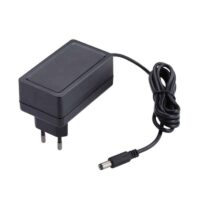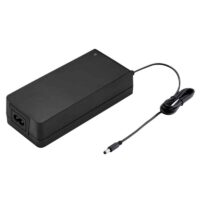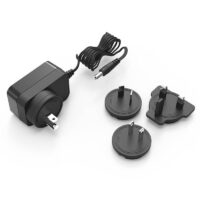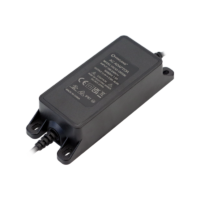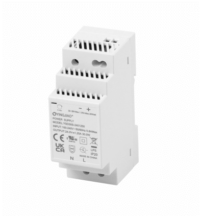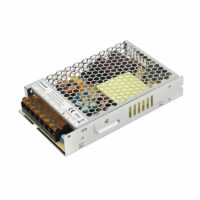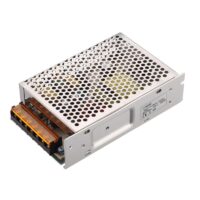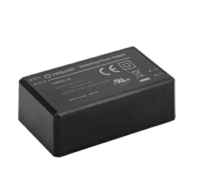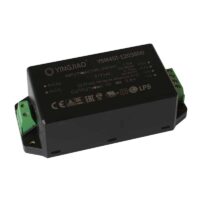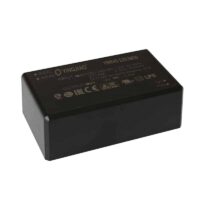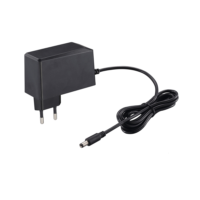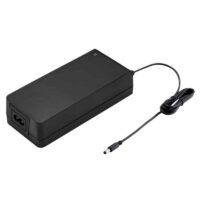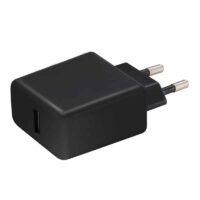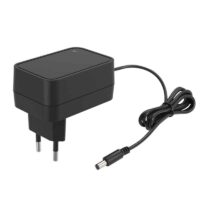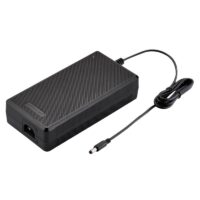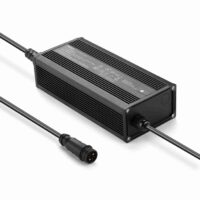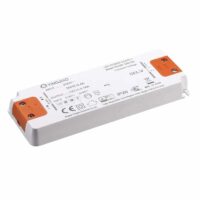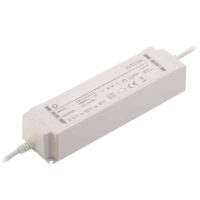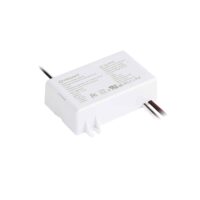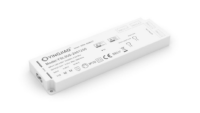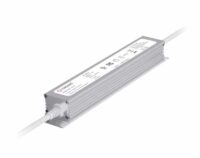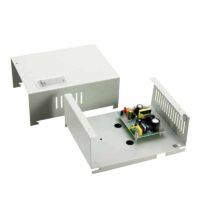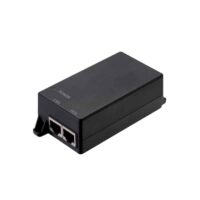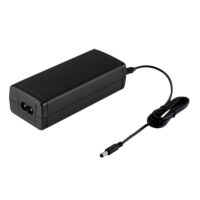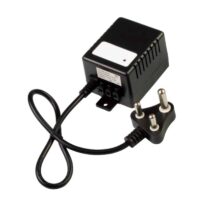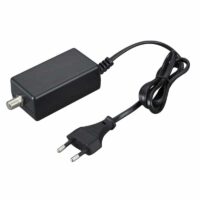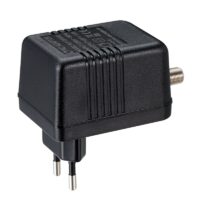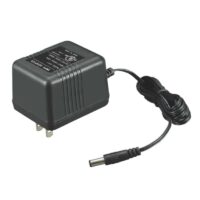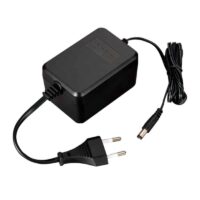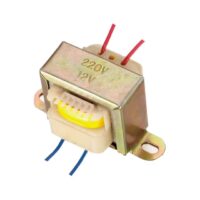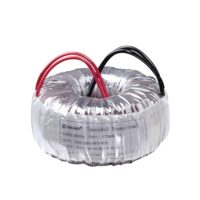Choosing the right switching power supply can be a challenging task, considering the plethora of options available in the market. Whether you are a professional working in the electronics industry or an individual looking for a reliable power supply for your project, it is important to know how to navigate through the choices to find the best one for your needs. In this comprehensive buyer’s guide, we will walk you through the key factors to consider when selecting a switching power supply. From wattage and efficiency to voltage regulation and form factor, we will cover all the essential aspects to help you make an informed decision. Additionally, we will provide valuable tips and insights to ensure that you choose a power supply that not only meets your current requirements but also has the potential to adapt to future demands. By the end of this guide, you will have a clear understanding of the various considerations involved in choosing the right switching power supply, empowering you to make the most suitable choice for your specific application.

Understanding switching power supplies
Choosing the right switching power supply can be a challenging task, considering the plethora of options available in the market. Whether you are a professional working in the electronics industry or an individual looking for a reliable power supply for your project, it is important to know how to navigate through the choices to find the best one for your needs.
In this comprehensive buyer’s guide, we will walk you through the key factors to consider when selecting a switching power supply. From wattage and efficiency to voltage regulation and form factor, we will cover all the essential aspects to help you make an informed decision. Additionally, we will provide valuable tips and insights to ensure that you choose a power supply that not only meets your current requirements but also has the potential to adapt to future demands.
By the end of this guide, you will have a clear understanding of the various considerations involved in choosing the right switching power supply, empowering you to make the most suitable choice for your specific application.
Why choosing the right switching power supply is important
Switching power supplies are electronic devices that convert electrical power from a source, such as a wall outlet or a battery, into a regulated output voltage suitable for powering various electronic devices. Unlike linear power supplies, which use a linear regulator to step down the voltage, switching power supplies use high-frequency switching circuits to achieve higher efficiency.
These power supplies are widely used in a range of applications, including computers, telecommunication equipment, industrial machinery, and consumer electronics. Understanding the basics of how switching power supplies work will help you make better-informed decisions when choosing the right one for your needs.
Switching power supplies consist of several key components, including a rectifier, a filter, a switching regulator, and a control circuit. The rectifier converts the incoming AC voltage into DC, which is then filtered to remove any remaining AC components. The switching regulator uses high-frequency switching to control the amount of power delivered to the load, while the control circuit ensures proper regulation and protection.
Factors to consider when selecting a switching power supply
Selecting the right switching power supply is crucial for several reasons. First and foremost, it ensures the safe and reliable operation of your electronic devices. A power supply that is not properly matched to the requirements of your load can lead to unstable voltages, excessive heat generation, and potential damage to your equipment.
In addition to ensuring the proper functioning of your devices, choosing the right switching power supply can also have a significant impact on energy efficiency. Higher efficiency power supplies not only help reduce electricity consumption but also generate less heat, resulting in improved reliability and longevity of your electronic components.
Moreover, selecting a power supply that meets your current requirements while allowing room for future expansion can help save costs in the long run. Investing in a power supply that can handle higher loads or accommodate additional devices as your project grows can eliminate the need for frequent upgrades or replacements.
Power requirements and load capacity
### Power Requirements and Load Capacity
The first and most important factor to consider when selecting a switching power supply is the power requirement of your load. This includes both the voltage and current ratings. It is essential to ensure that the power supply can deliver sufficient power to meet the demands of your devices.
To determine the power requirements, you need to consider the total power consumed by all the components in your system. This includes the power needed by the main circuitry as well as any additional peripherals or accessories. It is recommended to add a safety margin to the calculated power requirements to account for any future expansions or changes in load.
In addition to the overall power requirements, it is also crucial to consider the load capacity of the power supply. The load capacity refers to the maximum amount of power that the power supply can deliver continuously without overheating or exceeding its operating limits. It is important to choose a power supply with a load capacity that comfortably exceeds the maximum power requirements of your load to ensure stable and reliable operation.
### Efficiency and Energy-Saving Features
Efficiency is another important factor to consider when selecting a switching power supply. Efficiency refers to the ratio of output power to input power and is typically expressed as a percentage. A higher efficiency power supply converts more of the input power into usable output power, resulting in reduced energy wastage and lower operating costs.
When comparing different power supplies, look for those that meet or exceed industry standards for efficiency. Energy Star certification is a good indicator of high-efficiency power supplies. Additionally, some power supplies come with advanced energy-saving features, such as power factor correction (PFC) and active power factor correction (APFC), which further enhance efficiency.
Investing in a high-efficiency power supply may have a higher upfront cost, but the long-term energy savings and reduced environmental impact make it a worthwhile investment.
### Voltage and Current Regulation
Voltage and current regulation are critical aspects to consider when selecting a switching power supply. Voltage regulation refers to the ability of the power supply to maintain a stable output voltage under varying load conditions. A good power supply should have tight voltage regulation to ensure that your devices receive the required voltage without any fluctuations.
Similarly, current regulation is important to ensure that the power supply can deliver a stable and consistent current to your devices. This is especially crucial for applications where precise current control is necessary, such as in LED lighting or motor control.
To determine the voltage and current regulation capabilities of a power supply, check the specifications provided by the manufacturer. Look for power supplies that offer low voltage and current ripple, as this indicates better regulation.
### Protection Features and Reliability
Reliability is a key factor to consider when choosing a switching power supply. A reliable power supply ensures that your devices are protected from voltage spikes, short circuits, and other potential power-related issues. Look for power supplies that come with built-in protection features such as overvoltage protection (OVP), overcurrent protection (OCP), and short circuit protection (SCP).
Additionally, it is important to choose a power supply from a reputable manufacturer known for producing reliable and high-quality products. Reading customer reviews and checking product ratings can give you valuable insights into the reliability of a particular power supply.
### Noise and Heat Management
Noise and heat are common challenges associated with switching power supplies. The switching action of the power supply can introduce electrical noise into the system, which can interfere with the proper functioning of sensitive electronic components. Look for power supplies that have low output noise levels to minimize the potential for interference.
Heat management is also crucial, as excessive heat can lead to reduced efficiency and reliability. Power supplies with efficient heat dissipation mechanisms, such as heatsinks or cooling fans, are preferred, especially for applications that require prolonged operation or high power consumption.
### Size, Form Factor, and Mounting Options
Finally, consider the size, form factor, and mounting options of the switching power supply. The physical dimensions of the power supply should match the available space in your application. Consider factors such as height, width, and depth, as well as any clearance requirements for proper airflow and heat dissipation.
The form factor of the power supply should also be compatible with your specific application. Common form factors include open-frame, enclosed, and DIN rail mount. Choose a form factor that best suits your needs and installation requirements.
Furthermore, consider the mounting options available for the power supply. Some power supplies can be mounted using screws, while others may require brackets or other mounting accessories. Ensure that the chosen power supply can be securely and conveniently mounted in your application.

Efficiency and energy-saving features
In conclusion, choosing the right switching power supply is a critical decision that can impact the performance, reliability, and energy efficiency of your electronic devices. By considering factors such as power requirements, efficiency, voltage and current regulation, protection features, noise and heat management, and size and form factor, you can make an informed decision that meets your specific needs.
Remember to thoroughly research and compare different power supply options, read customer reviews, and consult with experts if needed. Investing in a high-quality power supply that aligns with your requirements can save you time, money, and potential headaches down the line.
With the knowledge and insights gained from this buyer’s guide, you are now equipped to choose the right switching power supply that ensures the smooth operation of your devices and paves the way for future growth and expansion. Happy power supply hunting!
Voltage and current regulation
Efficiency is a crucial factor to consider when selecting a switching power supply. The efficiency of a power supply refers to the ratio of the output power to the input power. A power supply with higher efficiency will consume less power and generate less heat, which can result in better performance and longer lifespan. The efficiency of a power supply is typically expressed as a percentage and can vary depending on the load, input voltage, and other factors.
In addition to efficiency, energy-saving features such as standby mode and power factor correction can also contribute to better performance and reduced energy consumption. Standby mode allows the power supply to enter a low-power state when the load is minimal, while power factor correction improves the power factor of the supply, reducing the amount of reactive power that is drawn from the source.
When choosing a power supply, look for models that have a high efficiency rating and energy-saving features. These features can not only save you money on energy bills but also help to reduce your carbon footprint and environmental impact.
Protection features and reliability
Voltage and current regulation are essential aspects to consider when selecting a switching power supply. Voltage regulation refers to the ability of the power supply to maintain a stable output voltage, regardless of changes in the input voltage or load. A power supply with good voltage regulation will ensure that your devices receive a consistent and reliable power supply, reducing the risk of damage or malfunction.
Current regulation refers to the ability of the power supply to limit the output current to a specific level, preventing the risk of overloading or short-circuiting. This is especially important if you are using the power supply for high-current applications such as motor control or LED lighting.
When choosing a power supply, look for models that have good voltage and current regulation. Look for specifications such as voltage ripple, load regulation, and current limiting to ensure that the power supply can provide a stable and reliable output.
Noise and heat management
Protection features and reliability are critical factors to consider when selecting a switching power supply. Protection features refer to the various mechanisms that the power supply has in place to protect against overloading, short-circuiting, overvoltage, and other potential hazards. Some common protection features include overcurrent protection, overvoltage protection, and thermal shutdown. These features can help to prevent damage to your devices and ensure the safety of your equipment and personnel.
Reliability is another crucial factor to consider when selecting a power supply. A reliable power supply will have a long lifespan, minimizing the need for replacement or repairs. Look for models that have a high Mean Time Between Failure (MTBF) rating and a warranty period that covers any defects or malfunctions.
When choosing a power supply, look for models that have robust protection features and a high level of reliability. These features can help to ensure the safety and longevity of your equipment and reduce the risk of downtime or failure.
Size, form factor, and mounting options
Noise and heat management are important considerations when selecting a switching power supply. Noise refers to the unwanted electrical signals that can be generated by the power supply and can interfere with other devices in the vicinity. Heat management refers to the ability of the power supply to dissipate heat generated by the internal components, preventing overheating and damage.
Look for models that have good noise and heat management features, such as efficient cooling systems, low EMI (Electromagnetic Interference), and low audible noise. These features can help to ensure reliable and efficient operation of your equipment and reduce the risk of interference or damage.
Conclusion and final considerations
Size, form factor, and mounting options are also important considerations when selecting a switching power supply. The size and form factor of the power supply will depend on the specific application and the available space. Look for models that have a compact and lightweight design, without compromising on performance and reliability.
Mounting options are also an important consideration, especially if you need to install the power supply in a specific location or orientation. Look for models that have flexible mounting options, such as DIN rail or wall mount, to ensure easy installation and maintenance.
When choosing a power supply, consider the size, form factor, and mounting options to ensure that the power supply fits your specific application and installation requirements.

